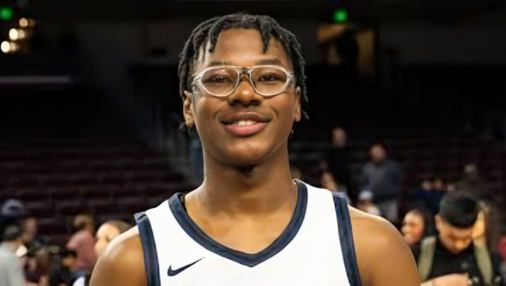Bryce James: Carving His Identity in Basketball’s Future
In a sport where legacies loom large, Bryce James is learning to translate potential into proof, crafting a path that’s distinctly his own.
Contents
Who is Bryce James?
Bryce Maximus James, born June 14, 2007, is the youngest son of NBA legend LeBron James and Savannah James, and the younger brother of Bronny James. Growing up around the game, Bryce has been exposed to elite training environments, top-tier coaching, and the daily habits that shape professionals. Yet, even with such proximity to greatness, the challenge remains: define himself not just as “LeBron’s son,” but as a player with his own identity and value.
Early Years & High School Journey
Bryce’s formative years in basketball were marked by incremental growth rather than sudden stardom. He spent time at noted Southern California programs, most prominently Sierra Canyon School, where he split minutes between junior varsity and varsity, logging glimpses of his shooting touch and improving feel for the game. Transfers—common in modern prep hoops—exposed him to different systems and roles, helping him adapt and learn to contribute in multiple contexts.
Physically, Bryce has filled out into a rangy wing frame. That growth, paired with his perimeter skill set, repositioned him from a developing guard to a prospect with genuine two-way potential. While his early varsity numbers were modest, the trendline pointed upward: more confidence with the ball, cleaner footwork, and a noticeable uptick in defensive awareness.
Recruitment & College Choice
As scouting services began to evaluate his game, Bryce slotted into the national conversation as a mid-to-high four-star type prospect—someone with measurable tools and room to surge. Interest from multiple Division I programs followed. Ultimately, Bryce committed to the Arizona Wildcats, a program known for up-tempo offense, NBA-caliber development, and a passionate fan base that turns college games into events.
Arizona also offers a system that should accentuate Bryce’s strengths: spacing for shooters, an emphasis on pace, and a track record of polishing wings into dependable contributors. The fit suggests early opportunities to carve out minutes if he defends, moves the ball, and knocks down open threes.
Playing Style & Skill Set
Bryce profiles as a shooting guard/wing with an emerging reputation for shot-making. His release is compact, his base increasingly stable, and he’s comfortable shooting off the catch from the corners and wings. In transition, he runs lanes well, and in the half court he’s learning to read closeouts—either side-stepping into space or swinging the ball to keep the advantage alive.
Defensively, length and timing are his calling cards. He contests on the perimeter, shows effort fighting through screens, and flashes weak-side rotations that hint at strong team defense instincts. Continued strength work should help him finish through contact and guard up a position when matchups demand it.
Expectations, Pressure & Family Legacy
The surname “James” guarantees attention—fair or not. Comparisons to Bronny and LeBron are inevitable. Bryce’s approach has been to focus on controllables: shot repetition, conditioning, and decision-making. The family’s guidance emphasizes consistency over hype, film study over noise, and the long view over immediate validation.
This mindset matters. Prospects develop on different timelines, and late bloomers often outperform early prodigies once their confidence and bodies catch up to their skill. The goal for Bryce isn’t to replicate a legend, but to maximize his own arc.
Freshman Year Ahead
At Arizona, Bryce enters a competitive rotation where minutes are earned. Expect him to be tasked with spacing the floor, defending without fouling, and bringing energy in second units. If the shot falls and the reads sharpen, his role could expand quickly, especially in lineups that value length and switchability on the wings.
Off the court, adjusting to the college schedule—classes, travel, practice, recovery—will test his time management. Embracing that rhythm is part of becoming a reliable collegiate player.
What’s Next?
Projecting beyond college is speculative, but the template is clear: keep stacking skill, strength, and game reps. If Bryce continues to grow as a shooter and defender while adding on-ball counters, he positions himself as a modern 3-and-D wing with upside. NBA talk will naturally follow, but the most important steps are the ones immediately ahead—winning his practice matchups, nailing his role, and impacting games on both ends.
Bottom line: Bryce James stands at the intersection of legacy and individuality. The name opens doors; his work will determine how far he walks through them. With the right habits and patience, he has a real chance to turn promise into production—and craft a story that’s unmistakably his.

